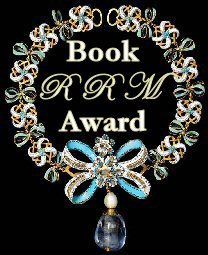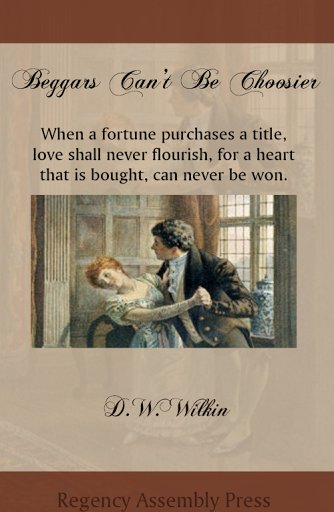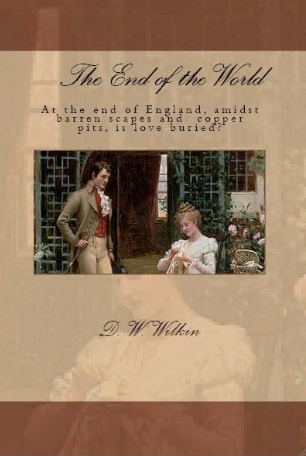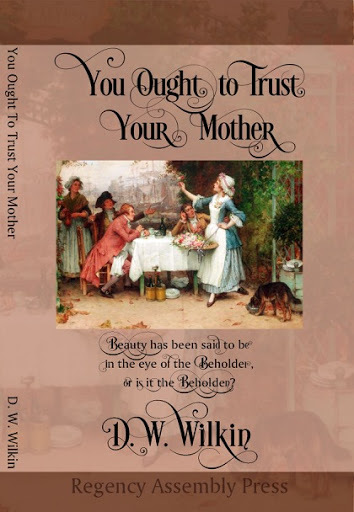D.W. Wilkin's Blog, page 31
August 28, 2016
Regency Personalities Series-Charlotte Hood 3rd Duchess of Bronte
Regency Personalities Series
In my attempts to provide us with the details of the Regency, today I continue with one of the many period notables.
Charlotte Hood Baroness Bridport 3rd Duchess of Bronte
20 September 1787 – 29 January 1873
Charlotte Hood 3rd Duchess of Bronte was the daughter of William Nelson, 1st Earl Nelson and Sarah Yonge. She died at the age of 85 in Cricket St. Thomas, Somerset, England. She was buried in Cricket St. Thomas, Somerset.
She succeeded to the title of Duchess of Bronté (of the Kingdom of Two Sicilies) on 28 February 1835.
She married Samuel Hood, 2nd Baron Bridport, son of Henry Hood, 2nd Viscount Hood and Jane Wheler, on 3 July 1810. They had seven children:
Hon. Mary Sophia Hood (d. 29 January 1888)
Hon. Charlotte Hood (d. 21 August 1906)
Hon. Jane Sarah Hood (d. 28 April 1907)
Hon. Frances Caroline Hood (b. 1813, d. 1 October 1903)
General Sir Alexander Hood, 1st Viscount Bridport of Cricket St. Thomas (b. 23 December 1814, d. 4 June 1904)
Hon. Catherine Louisa Hood (b. c 1818, d. 6 October 1893)
Hon. Horatio Nelson Hood (b. 24 April 1826, d. 1832)


RAP (Regency Assembly Press) in need of Beta-Readers
Regency Assembly
Press
is looking for
Beta Readers
One novel is ready for Beta Reading
We have a continuation of Pride and Prejudice with Ms Caroline Bingley and her fortune at stake:
Do we think that Mr Hurst married his Bingley Bride without incentive? It is highly probable that Caroline Bingley, even though she has a sharp, acerbic tongue, still is in possession of a fortune and an astute fortune hunter who deciphers this may soon be on the road to, if not a happy marriage, one with financial security.
Please respond or send an email if you are interested


RAP’s has Beggars Can’t Be Choosier
One of the our most recent Regency Romances.
Beggars has won the prestigious Romance Reviews Magazine Award for Outstanding Historical Romance:
It has also been nominated for the 2015 RONE Awards in the category of Historical:Post Medieval sponsored by InD’Tale Magazine.
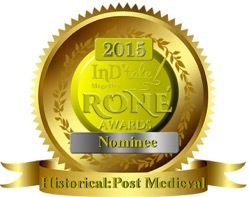
It is available for sale and I hope that you will take the opportunity to order your copy.
For yourself or as a gift. It is now available in a variety of formats. For $3.99 you can get this Regency Romance for your eReader. A little more as an actual physical book.
When a fortune purchases a title, love shall never flourish, for a heart that is bought, can never be won.
The Earl of Aftlake has struggled since coming into his inheritance. Terrible decisions by his father has left him with an income of only 100 pounds a year. For a Peer, living on such a sum is near impossible. Into his life comes the charming and beautiful Katherine Chandler. She has a fortune her father made in the India trade.
Together, a title and a fortune can be a thing that can achieve great things for all of England. Together the two can start a family and restore the Aftlake fortunes. Together they form an alliance.
But a partnership of this nature is not one of love. And terms of the partnership will allow both to one day seek a love that they both deserve for all that they do. But will Brian Forbes Pangentier find the loves he desires or the love he deserves?
And Katherine, now Countess Aftlake, will she learn to appreciate the difference between happiness and wealth? Can love and the admiration of the TON combine or are the two mutually exclusive?
Purchase here:Amazon Kindle, Barnes and Noble Nook, Kobo, Smashwords, iBooks, & Trade Paperback
Feedback
If you have any commentary, thoughts, ideas about the book (especially if you buy it, read it and like it
August 27, 2016
Conclusion of the Trolling Series-We’ll All Go A Trolling
We’ll All Go A Trolling Not only do I write Regency and Romance, but I also have delved into Fantasy.
The Trolling series is the story of a man, Humphrey. We meet him as he has left youth and become a man with a man’s responsibilities.
We follow him in a series of stories that encompass the stages of life. We see him when he starts his family, when he has older sons and the father son dynamic is tested.
We see him when his children begin to marry and have children, and at the end of his life when those he has loved, and those who were his friends proceed him over the threshold into death.
All this while he serves a kingdom troubled by monsters. Troubles that he and his friends will learn to deal with and rectify. It is now available in a variety of formats.
For $2.99 you can get this fantasy adventure.

Barnes and Noble for your Nook
King Humphrey, retired, has his 80th birthday approaching. An event that he is not looking forward to.
A milestone, of course, but he has found traveling to Torc, the capital of the Valley Kingdom of Torahn, a trial. He enjoys his life in the country, far enough from the center of power where his son Daniel now is King and rules.
Peaceful days sitting on the porch. Reading, writing, passing the time with his guardsmen, his wife, and the visits of his grandson who has moved into a manor very near.
Why go to Torc where he was to be honored, but would certainly have a fight with his son, the current king. The two were just never going to see eye to eye, and Humphrey, at the age of 80, was no longer so concerned with all that happened to others.
He was waiting for his audience with the Gods where all his friends had preceded him. It would be his time soon enough.
Yet, the kingdom wanted him to attend the celebrations, and there were to be many. So many feasts and fireworks he could not keep track, but the most important came at the end, when word was brought that the Trolls were attacking once more.
Now Humphrey would sit as regent for his son, who went off to fight the ancient enemy. Humphrey had ruled the kingdom before, so it should not have been overwhelming, but at eighty, even the little things could prove troublesome.
Feedback
If you have any commentary, thoughts, ideas about the book (especially if you buy it, read it and like it
Regency Personalities Series-Edward Rigby
Regency Personalities Series
In my attempts to provide us with the details of the Regency, today I continue with one of the many period notables.
Edward Rigby
27 December 1747 – 27 October 1821
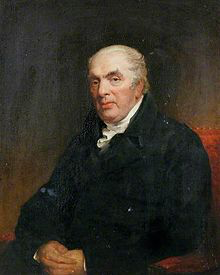
Edward Rigby
Edward Rigby was the son of John Rigby, by his wife Sarah (d. 1773), daughter of John Taylor, he was born at Chowbent, Lancashire, on 27 December 1747. One of his sisters married Dr. Caleb Hillier Parry, and became the mother of Sir William Edward Parry. Educated at Norwich School and Warrington Academy, Rigby was apprenticed in 1762 to David Martineau, surgeon, of Norwich, and then studied in London. Admitted a member of the Corporation of Surgeons on 4 May 1769, he married in the same year, and settled in Norwich.
In 1786 Rigby took the lead in establishing the Norfolk Benevolent Society for the relief of the widows and orphans of medical men. In July 1789 he visited France and other parts of the continent, witnessing the storming of the Bastille. A practical agriculturist, he was the friend of Thomas William Coke of Holkham, he experimented on his own farm at Framingham Earl, about five miles from Norwich.
In 1783 Rigby became a member of the corporation of guardians of Norwich, and promoted the economical administration of the Poor Laws. Meeting with much opposition, he resigned in the following year. He became alderman in 1802 in a very tight contest for the North Ward, sheriff in 1803, and mayor of Norwich in 1805, presiding over a meeting addressing the issue of smallpox in the city. Rigby is said to have made known the flying shuttle to Norwich manufacturers, and to have introduced vaccination.
In politics Rigby was a Whig, and a supporter of William Windham. In 1794, however, when Windham became Secretary at War and had to stand again for Norwich, Rigby was one of the disillusioned Whigs who backed James Mingay against him, and proposed the candidate. Windham was elected, but Mingay’s reputation as a Whig was boosted.
Rigby died on 27 October 1821, and was buried at Framingham.
In 1776 Rigby published An Essay on the Uterine Hæmorrhage which precedes the Delivery of the full-grown Fœtus (3rd edit. 1784; 6th edit., with a memoir by John Cross, Norwich, 1822). This work was translated into French, by Marie-Anne-Victoire Gallain Boivin (1818), and German, and made Rigby’s professional reputation. He wrote also:
An Essay on the Theory and Production of Animal Heat, and on its Application in the Treatment of Cutaneous Eruptions, Inflammations, and some other Diseases, London, 1785.
Chemical Observations on Sugar, London, 1788.
An Essay on the use of the Red Peruvian Bark in the Cure of Intermittents, London, 1783.
Reports of the Special Provision Committee, appointed by the Court of Guardians, in … Norwich, 1788.
Further Facts relating to the Care of the Poor and the Management of the Workhouse in the City of Norwich, a sequel.
Holkham, its Agriculture, etc., Pamphleteer, 1813, vol. xiii.; 2nd edit. with … additions, Norwich, 1817; 3rd edit. … enlarged, Norwich, 1818. Another edit. 1819.
Report of the Norwich Pauper Vaccination, from 10 Aug. 1812 to 10 Aug. 1813, London, 1813.
Suggestions for an Improved and Extended Cultivation of Mangel Wurzel, Norwich 1815.
Italy: its Agriculture … from the French of Châteauvieux, 1819.
Framingham: its Agriculture, &c., including the Economy of a small Farm, Norwich, 1820.
His Letters from France, addressed to his wife in 1789, were first published by his daughter Lady Eastlake, London, 1880.
Rigby married, first, Sarah, coheir of John Dybal, by whom he left two daughters, and secondly, in 1803, Anne Palgrave, daughter of William Palgrave of Great Yarmouth, by whom he had twelve children, four of whom, three girls and a boy, were the production of one birth on 15 August 1817. Edward Rigby (1804–1860) and Elizabeth Eastlake were among them.


August 26, 2016
Regency Personalities Series-Linnean Society of London
Regency Personalities Series
In my attempts to provide us with the details of the Regency, today I continue with one of the many period notables.
Linnean Society of London
1788-
Linnean Society of London was founded in 1788 by botanist Sir James Edward Smith. The society derives its name from the Swedish naturalist Carolus Linnaeus, the ‘father of taxonomy’, who systematised biological classification through his binomial nomenclature. He was known as Carl von Linné after his ennoblement, hence the spelling ‘Linnean’, rather than ‘Linnaean’. The society had a number of minor name variations before it gained its Royal Charter on 26 March 1802, when the name became fixed as “The Linnean Society of London”. In 1802, as a newly incorporated society, it comprised 228 fellows. It is the oldest surviving natural history society in the world. Throughout its history the society has been a non-political and non-sectarian institution, existing solely for the furtherance of natural history.
Membership requires nomination by at least one fellow and election by a minimum of two thirds of those electors voting. Fellows may employ the post-nominal letters ‘FLS’. Fellowship is open to both professional scientists and to amateur naturalists who have shown active interest in natural history and allied disciplines.
Meetings have historically been, and continue to be, the main justification of the society’s existence. Meetings are venues for people of like interests to exchange information, talk about scientific and literary concerns, exhibit specimens and listen to lectures.
Linnaeus’ botanical and zoological collections were purchased in 1783 by Sir James Edward Smith, the first President of the society, and are now held in London by the society. The collections include 14,000 plants, 158 fish, 1,564 shells, 3,198 insects, 1,600 books and 3,000 letters and documents. They may be viewed by appointment.
Smith’s own plant collection is also held by the Society. It has been databased by the Smith Herbarium Project at the National Museums Liverpool. 6,000 specimens have been cleaned and repaired.
Other notable holdings of the society include the notebooks and journals of Alfred Russel Wallace and the paintings of plants and animals made by Francis Buchanan-Hamilton (1762-1829) in Nepal.
The Linnean Society began its extensive series of publications on 13 August 1791, when Volume I of Transactions was produced.
Presidents
1837–1849 Edward Stanley
1833–1836 Duke of Somerset
1828–1833 Edward Smith-Stanley, 13th Earl of Derby
1788–1828 Sir James Edward Smith


RAP has The End of the World
The End of the World This is the first of the Regency Romances I published. It is available for sale and I hope that you will take the opportunity to order your copy.
For yourself or as a gift. It is now available in a variety of formats. And now at the reduced price of $3.99 you can get this Regency Romance for your eReader. A little more as an actual physical book.
Barnes and Noble for your Nook
Amazon for your Kindle and as a Trade Paperback
Hermione Merwyn leads a pleasant, quiet life with her father, in the farthest corner of England. All is as it should be, though change is sure to come. For she and her sister have reached the age of marriage, but that can be no great adventure when life at home has already been so bountiful.
When Samuel Lynchhammer arrives in Cornwall, having journeyed the width of the country, he is down to his last few quid and needs to find work for his keep. Spurned by the most successful mine owner in the county, Gavin Tadcaster, Samuel finds work for Gavin’s adversary, Sir Lawrence Merwyn.
Can working for Sir Lawrence, the father of two young women on the cusp of their first season to far away London, be what Samuel needs to help him resolve the reasons for his running away from his obligations in the east of the country?
Will the daughters be able to find happiness in the desolate landscapes and deadly mines of their home? When a stranger arrives in Cornwall while the war rages on the Peninsula, is he the answer to one’s prayers, or a nightmare wearing the disguise of a gentleman?
Feedback
If you have any commentary, thoughts, ideas about the book (especially if you buy it, read it and like it
August 25, 2016
Regency Personalities Series-Sir Richard Westmacott
Regency Personalities Series
In my attempts to provide us with the details of the Regency, today I continue with one of the many period notables.
Sir Richard Westmacott
15 July 1775 – 1 September 1856
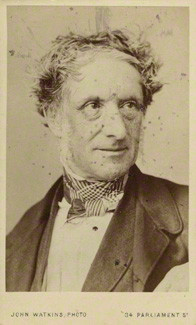
Richard Westmacott
Sir Richard Westmacott studied with his father, also named Richard Westmacott, at his studio in Mount Street, Grosvenor Square in London before going to Rome in 1793 to study under Antonio Canova. On returning to England in 1797, he set up a studio, where John Edward Carew and Musgrave Watson gained experience.
Westmacott had his own foundry at Pimlico, in London, where he cast both his own works, and those of other sculptors, including John Flaxman’s statue of Sir John Moore (1810–18) for Glasgow. Late in life he was asked by the Office of Works for advice on the casting of the reliefs for Nelson’s Column. He also had an arrangement with the Trustees of the British Museum, which allowed him to make moulds and supply plaster casts of classical sculpture in the museum’s collection to country house owners, academies and other institutions.
He exhibited at the Royal Academy between 1797 and 1839. His name is given in the catalogues as “R. Westmacott, Junr.” until 1807, when the “Junr.” was dropped. He was elected an associate of the Royal Academy in 1805, and a full academician in 1811; his diploma work, a marble relief of Jupiter and Ganymede, is still in the academy’s collection. He was professor of sculpture at the academy from 1827 until his death. He received his knighthood on 19 July 1837.
Among his works are the reliefs for the north side of Marble Arch, the sculptures of figures representing The Rise of Civilisation on the pediment of the British Museum, and the Waterloo Vase now in Buckingham Palace Gardens. This enormous urn was sculpted from chunks of marble earmarked by Napoleon for a trophy commemorating his anticipated victory in the Napoleonic Wars and then given to George IV as a gift from the Grand Duke of Tuscany.
His statue of Horatio Nelson, Birmingham was the first statue of Nelson in Britain. There are other monuments to the admiral by Westmacott at Bull Ring, Birmingham, and Barbados, while that at Liverpool was modelled and cast by Westmacott, to a design by Matthew Cotes Wyatt. In Liverpool there is also an equestrian statue of King George III sculpted by Westmacott, which was unveiled in 1822. He was responsible for the statue of the agriculturalist and developer Francis Russell, 5th Duke of Bedford in Russell Square, and the one of the Duke of York on top of the column in Waterloo place. His Achilles in Hyde Park, a bronze copy of an antique sculpture from Monte Cavallo in Rome, is a tribute to the Duke of Wellington, paid for by £10,000 raised by female subscribers.
His sculptures of poetical subjects were in a style similar to those of the contemporary Italian school: his works of this type included Psyche and Cupid for the Duke of Bedford; Euphrosyne for the Duke of Newcastle; A Nymph Unclasping her Zone; The Distressed Mother and The Houseless Traveller.
Westmacott also sculpted the memorials to Pitt the Younger, Spencer Perceval, Charles James Fox and Joseph Addison in Westminster Abbey; and those to Sir Ralph Abercromby, Lord Collingwood and Generals Pakenham and Gibbs in St Paul’s Cathedral.
His other sepulchural monuments include those to Lt. General Christopher Jeaffreson (d.1824) in St.Mary’s Church in Dullingham; to Commander Charles Cotton’ (d.1828) at St. Mary’s Church in Madingley; to William Pemberton (d.1828) at St Margaret’s Church in Newton, South Cambridgeshire; to Sir George Warren (d.1801) at St. Mary’s Church, Stockport, Greater Manchester, depicting a standing female figure by an urn on a pillar; and to Rev. Charles Prescott (d.1820), in St. Mary’s Church, Stockport, showing a seated effigy.
Westmacott lived and died at 14 South Audley Street, Mayfair, London where he is commemorated by a blue plaque. His son, also called Richard Westmacott, followed closely in his footsteps also becoming a notable sculptor, a Royal Academician and professor of sculpture at the academy.
Westmacott is buried in a tomb at St Mary’s Church at Chastleton, Oxfordshire, where his third son Horatio was rector in 1878.


You Ought to Trust Your Mother (YOTTYM) now released
Now available the next Regency Romance tale by D.W. Wilkin:
Beauty has been said to be in the eye of the Beholder, or is it the Beholden.
The tale of Baron Fallion Lancelot Stafford, a gentleman of perhaps too much leisure who has served in the wars of some few years before. He now has decided that all this leisure is perhaps a waste and he should be doing something. He was just very unsure what that was.
We also find Lady Beatrice Cavendish, the daughter of the Earl of Hoare who is famed for her beauty, yet cannot find any man who has more to speak to her beyond that one subject. And yet far too many think they should offer for her with only the ardent praise to her looks to recommend them. Perhaps there exists one suitor who could speak on a subject beyond that?
In the rush of the Season of 1821, where their most intimate friends have all come to the conclusion that they should marry, can Beatrice put aside her willful ways and hear sound thoughts that her mama has said on that particular subject? Beatrice was sure that her mother would be content if she accepted the Baron Tweedglen, or any of a dozen other men of good breeding, position, or wealth. Whether they had ought to speak on her attractiveness, and no other words would leave their mouths.
Certainly a marriage with such foundations was doomed to crumble once age advanced and liver spots or wrinkles appeared. Yet amongst the Ton, such marriages were often deemed successes. Would they be so for Beatrice, though? That was something she was destined to apply her own thoughts to.
For Baron Tweedglen, the haunting memory of the war caused him to avoid any reference to his time spent prosecuting that undertaking. Such deamons as consumed his psyche, were magnified as his desire was for a world that art flourished and certainly his experience had been the exact opposite of such an inclination. The Baron was desperately in need of something that could save him from his own self. Was there a remedy in marriage as the entire Ton seemed to believe?
Now available on Amazon for $15.99…
also available for your Kindle and Kindle Reading Apps for $3.99
for those who have iPads, Nooks, or other devices, the book is also available at:
The Apple iBookstore, Barnes and Noble Nook store, Kobo, and Smashwords for $3.99 as well.


August 24, 2016
Regency Personalities Series-Sir James Lamb 1st Baronet
Regency Personalities Series
In my attempts to provide us with the details of the Regency, today I continue with one of the many period notables.
Sir James Bland Lamb 1st Baronet
8 June 1752 – 13 October 1824
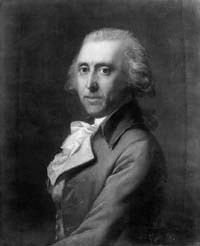
James Bland Lamb
Sir James Lamb 1st Baronet was born James Burges and known as Sir James Burges and born at Gibraltar. He was the only son of George Burges and Anne Whichnour Somerville. His mother was the daughter of James Somerville, 13th Lord Somerville. His father had distinguished himself at the Battle of Culloden by capturing the standard of Charles Edward Stewart and was later deputy paymaster in Gibraltar.
He went to Westminster School and then entered University College, Oxford in 1770 before studying law at Lincoln’s Inn in 1773.
Burges first served in Parliament as Member of Parliament for Helston from 1787 to 1790). He then served as Under-Secretary of State for Foreign Affairs between 1789 and 1795 before becoming a Baronet and Knight Marshal of his majesty’s household (1795) where he played an important role in the coronation of George IV.
Burges was an ambitious and productive writer. He was well established; being a friend of William Cumberland and John Graves Simcoe; and a patron of Thomas Dermody. He was connected by marriage to Lord Byron. He wrote music for Ode to the Passions by William Collins and wrote the prologue to Vortigern and Rowena (1796).
He exchanged poetry with royalty and wrote long poems. The Birth and Triumph of Love was published in 1796 and the 16,000 line poem was very poorly received. It was quoted as a project that was known for its lack of success. Despite the ignominy Burges still had a prestige and funds available where he could indulge his literary interests. He wrote an introduction for William Henry Ireland Shakespearian forgery and Thomas Dermody stole money from him. Burges continued to publish poetry and he had a play in Drury Lane. Despite being championed by Lord Byron, no other plays followed.
He wrote an introduction to a later edition of the Pilgrim’s Progress sequel, Progress of the Pilgrim Good-Intent in Jacobinical Times. In this introduction he revealed that the true author of the work was his gifted sister Mary Ann Burges.
Lamb married three times; his first marriage to Elizabeth Noel, second daughter of Edward Noel, 1st Viscount Wentworth in 1777 produced no children. His second marriage to Anne, third daughter of Lieutenant-colonel Montolieu, Baron of St. Hypolite produced the following children.
Charles Montolieu (1785–1864), 2nd Baronet.
Wentworth-Noel (b. 30 December 1792), an ensign in the Coldstream Guards, he was killed at the 1812 Siege of Burgos during the Peninsular War.
Somerville-Waldemar (b. 7 March 1794), an ensign in the 1st Foot Guards, lost a leg at the Battle of Waterloo in 1815. In 1821 he married Mademoiselle Melanie-Marianne Meray, daughter of Capt. Meray, of the French Army.
Clara-Maria (d. 4 February 1821).
Emilia-Charlotte, who married Major-General Sir Hugh Halkett on 25 May 1810.
Caroline-Eliza-Anne (d. 20 November l863).
Sophia-Anne (d.11 October 1858), who married Warburton Davies on 21 December 1821.
Julia-Octavia (d. 28 October 1826).
In 1812, Lamb married for the third time to Lady Margaret Fordyce, widow of Alexander Fordyce and daughter of James Lindsay, 5th Earl of Balcarres. The couple had no children.
Heroic epistle from Serjeant Bradshaw to John Dunning. 1780.
Considerations on the law of insolvency. 1783.
A letter to the Earl of Effingham. 1783.
Address to the country gentlemen of England. 1789.
Letters on the Spanish aggression at Nootka. 1790.
Narrative of the negotiation between France and Spain in 1790. 1790.
Alfred’s letters: a review of the political state of Europe. 1792.
The birth and triumph of love. 1796.
Richard the first: a poem in eighteen books. 2 vols, 1801.
The exodiad [with Richard Cumberland]. 1807, 1808.
Riches, or the wife and brother: a play. 1810.
Songs, duets, etc. in Tricks upon travellers, a comic opera. 1810.
Dramas. 2 vols, 1817.
The dragon knight: a poem in twelve cantos. 1818.
Reasons in favour of a new translation of the holy scriptures. 1819.
An inquiry into the procrastination attributed to the House of Lords. 1824.
Selections from the letters and correspondence, ed. Hutton. 1885.



